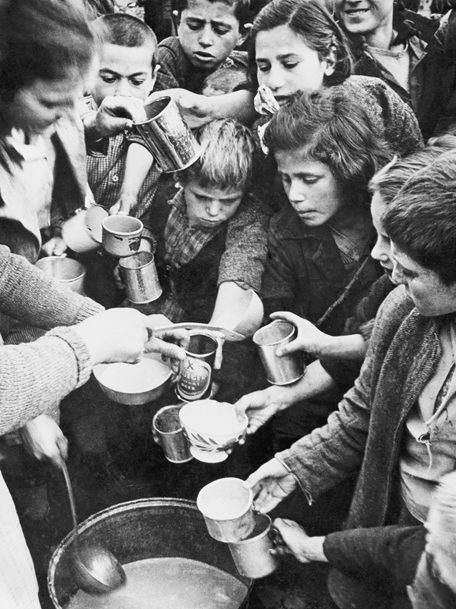A History of World Societies:
Printed Page 958
A History of World Societies Value
Edition: Printed Page 970
The United Nations
The Cold War was not just a confrontation between the United States and the Soviet Union, but also an effort to avoid war. Similar efforts after the Second World War to assure peace and stability through international cooperation culminated in 1945 when representatives of fifty nations met in San Francisco to draft a charter for a new intergovernmental organization called the United Nations. Like that of its predecessor, the League of Nations (see Chapter 28), the immediate goal of the United Nations was to mediate international conflicts in order to preserve peace. But in 1945 the founders of the United Nations foresaw a more ambitious role for the new body than the League of Nations had played: beyond conflict resolution, the UN would support the decolonization of territories under foreign rule; promote economic development; and expand access to health care, protection for workers, environmental conservation, and gender equity.

The United Nations was divided into two bodies: a General Assembly that met annually and included all nations that signed the UN Charter; and a Security Council made up of the five main regional powers, each of which held veto power over the council’s decisions, making it a body that in effect only functioned through unanimous consent. Roosevelt’s vision for the members of the Security Council included the United States, the Soviet Union, the United Kingdom, China, and Brazil. Given the intensity of U.S. influence in Latin America (see Chapter 27), British and Soviet leaders feared the Brazilian seat would simply be a second vote for the United States, so they insisted that France instead be the fifth member of the Security Council. After the Chinese Revolution in 1949, the government of Taiwan held China’s seat until the United Nations transferred it to the People’s Republic of China in 1971.
The UN gave critical support to decolonization efforts. Its charter defended the right of self-
In its early years, the United Nations mediated Indonesia’s demand for independence from the Netherlands, which fought a four-